Sourdough potato bread is a seriously soft and delicious, with a fluffy inside and crispy outside. Perfect for sandwich, toast, French toast, or all on its own.
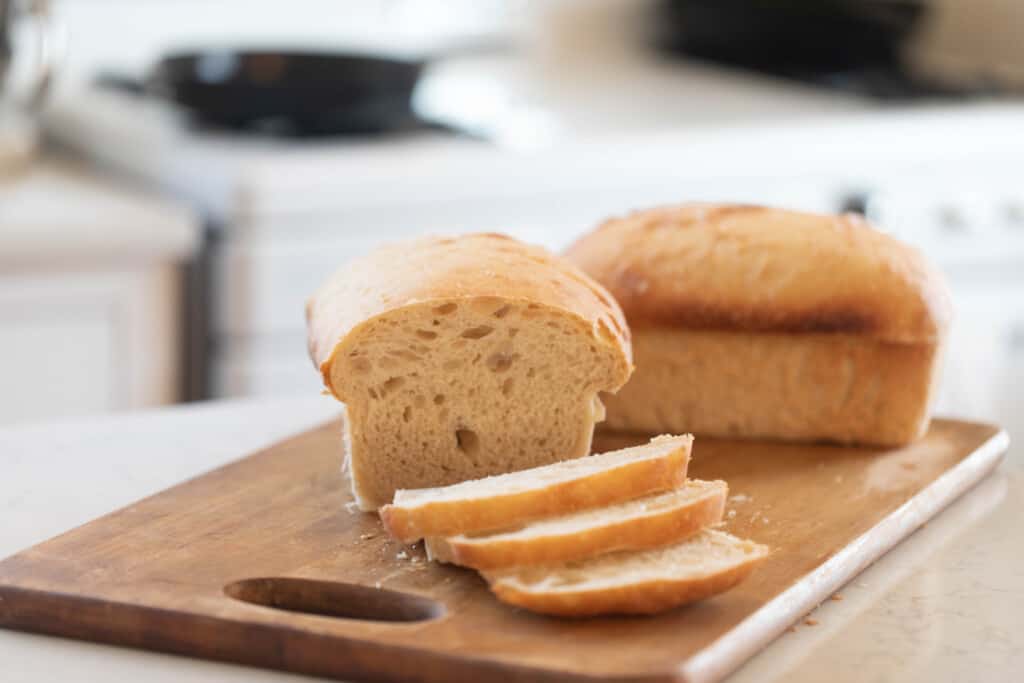
This bread may be a new favorite in the house. And no, you cannot taste potatoes. All the kids were shocked when I told them the humble potato somehow made it into this yummy loaf.
Potatoes add extra moisture to the loaf making the texture really soft while also having lots of holes. Not only do they add a lovely texture, but they also make it more nutritious by adding more fiber, protein, potassium, B6 and more.
This is a hearty bread perfect for a chilly winter evening. Serve as a side with a warm bowl of soup, make it the vehicle for a yummy sandwich, or in a filling breakfast strata. The possibilities are endless.
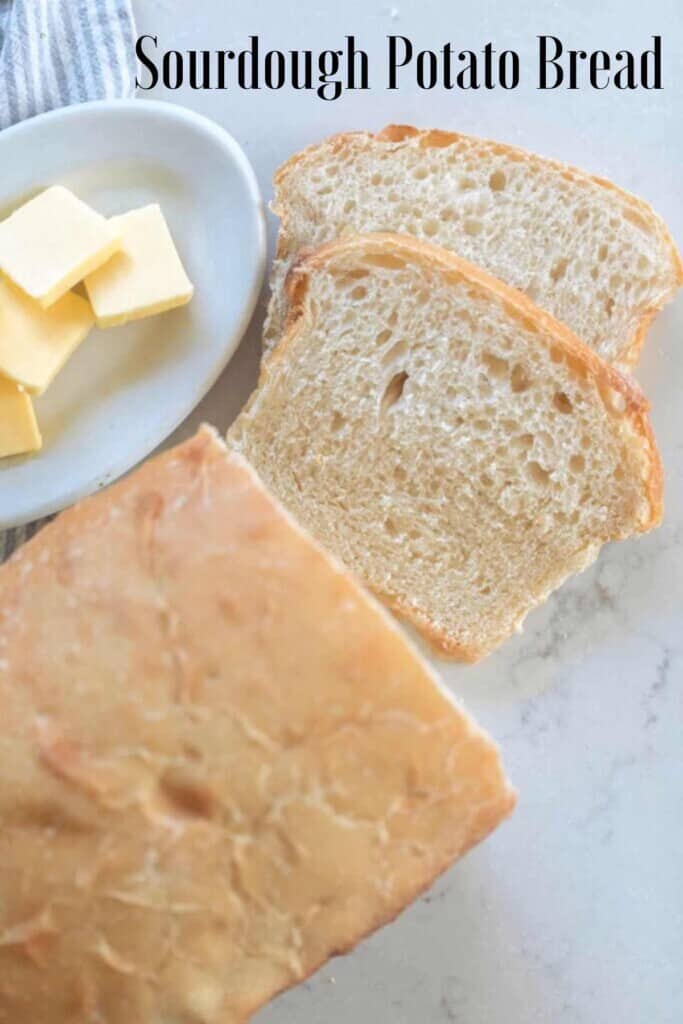
Why you will love this recipe:
Great way to use leftover mashed potatoes. Got lots of extra mashed potatoes from dinner or the holidays? This is a wonderful way to use them up.
Delicious. There is nothing better than a soft loaf of fresh sourdough bread.
Easy to make. This recipe is super simple without any complicated steps.
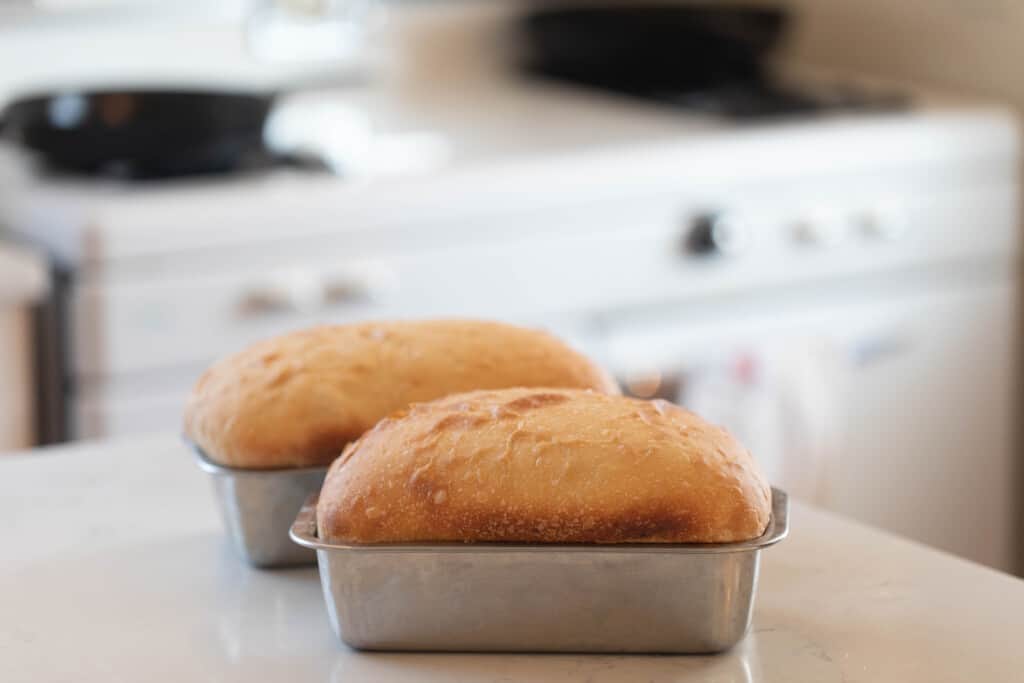
Tips For Making Sourdough Potato Bread:
- Substitute mashed potatoes for potato flakes. Make potato flakes into 1 cup mashed potatoes and use in the recipe.
- Don’t have a stand mixer? No problem. Check the instructions below to see how to make this bread with the stretch and fold technique.
- If you are dairy free, substitute the milk in the recipe with the water used to make the mashed potatoes and substitute the butter for vegan butter.
This post contains affiliate links, which means I make a small commission at no extra cost to you. See my full disclosure here.
FAQ:
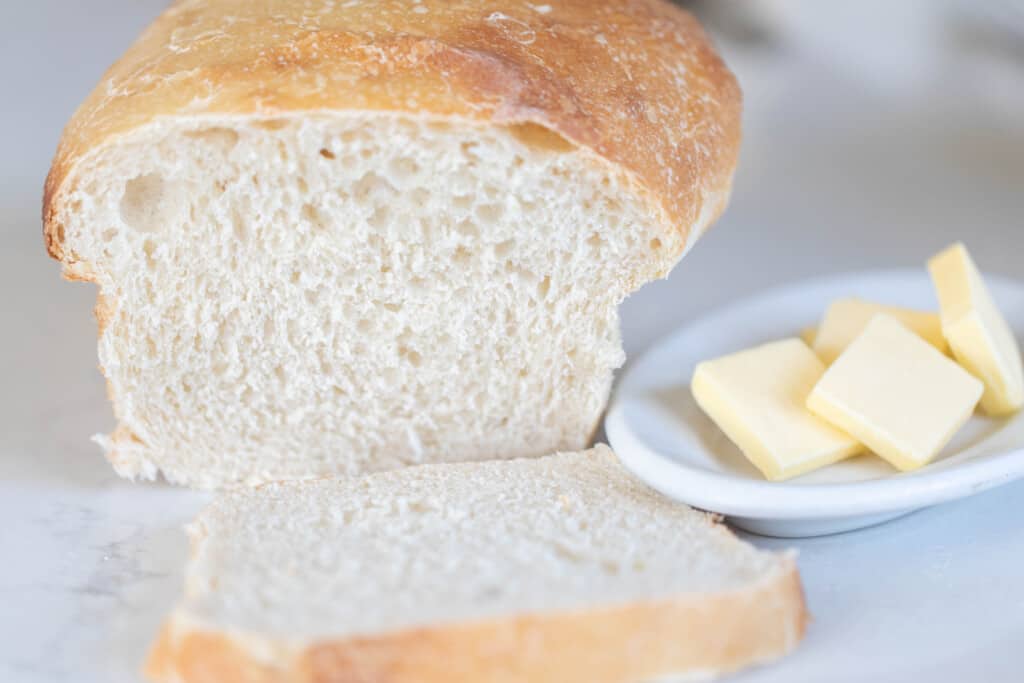
What does adding a potato to dough do?
Potatoes can hold more moisture than wheat, giving this bread a softer fluffier texture.
Is sourdough made from potatoes?
Typically no. Sourdough is usually made from flour and water. There are some recipes out there for sourdough starters made with potatoes.
What is special about potato bread?
It is a richer, fluffier bread that also has a crispy outside. It is such a delicious and wonderful bread.
Ingredients:
Mashed potatoes – A great way to use leftover mashed potatoes or make with 1 large russet potato. You could also use potato flakes made into mashed potatoes for a super fast alternative.
Milk – I prefer whole milk. For a dairy free option: can also substitute milk with potato water (the water the potato boiled in).
Salt
Sugar
Butter – For a dairy free option use softened coconut oil or vegan butter.
Sourdough starter – Active and bubbly. It should be fed 4-12 hours before starting the recipe. If you are new to sourdough check out my post on how to make a sourdough starter.
All-purpose flour – I love that this bread is made with all-purpose flour. No fancy flours. If you are milling your own grain you can use hard white wheat.
Tools you may need:
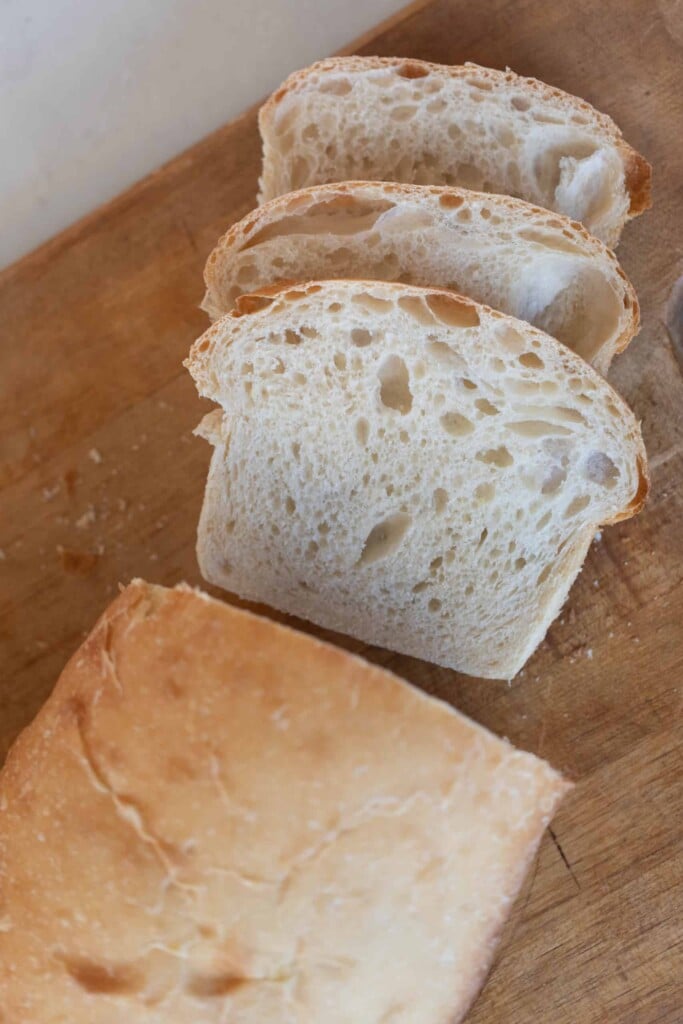
How To Make Sourdough Potato Bread
Peel potatoes and add to a pot of water. The water should cover the potatoes over 2 inches.
Place pan on medium high heat and boil for 15-20 minutes or until fork tender.
Drain potatoes and mash. Set aside.
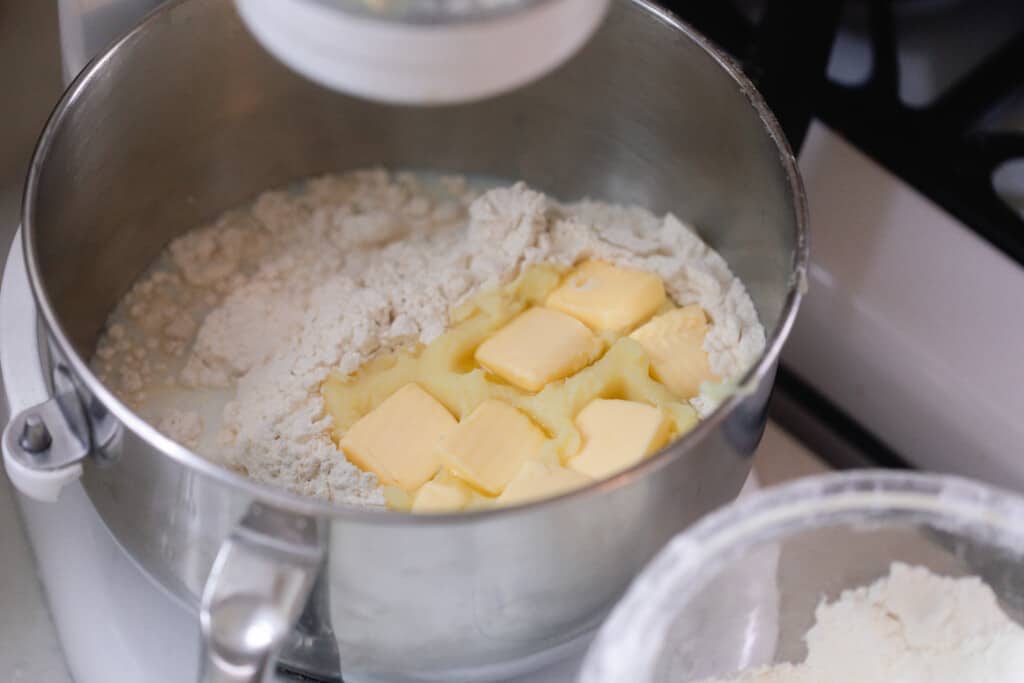
Add all ingredients to a stand mixer with dough hook and knead until smooth and elastic, about 10-15 minutes. This is a wetter dough like the sourdough sandwich bread so you have to knead for a loooong time. Make sure it pulls away from the sides of the bowl, and passes the window pane test.
Don’t have a stand mixer? No problem. Mix ingredients in a bowl and let it set for about 15 minutes. Next, start stretch and folds.
Grab the edge of the dough in the bowl and pull up gently wiggling the dough a bit while stretching it upwards. Push the dough back into the center. Turn the bowl a quarter turn and do this stretch and fold again, repeating 2-3 more times. This is one round of stretch and folds.
First 3 rounds of stretch and folds – every 15 minutes. Last 3 rounds stretch and folds – every 30 minutes.
I like how hands off using the stand mixer is, but the stretch and fold method works beautifully too.
Place in a greased bowl with a lid or cover with plastic wrap or beeswax wraps.
Bulk rise- 8 hours in a warm place. The dough should double.
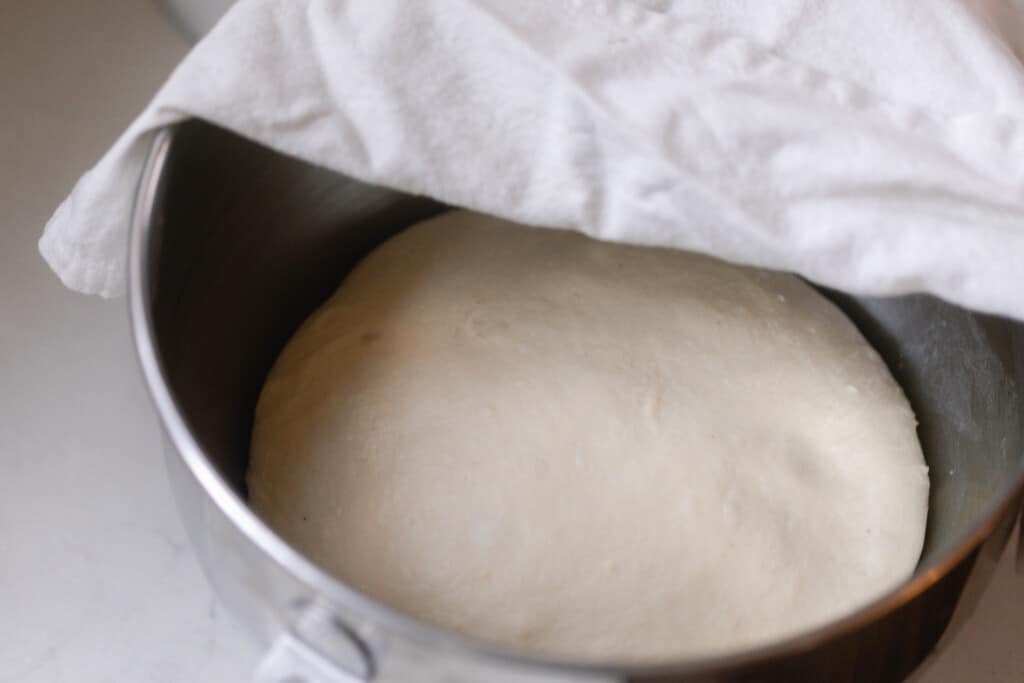
Divide the dough into two equal sized dough balls.
Shape to fit into loaf pans.
Grease pans well to prevent sticking. Add dough to loaf pans.
Cover with something airtight and rise again until doubled, about 2-3 hours.
Preheat the oven to 350 degrees.Bake for 45 minutes or until the crust is golden.
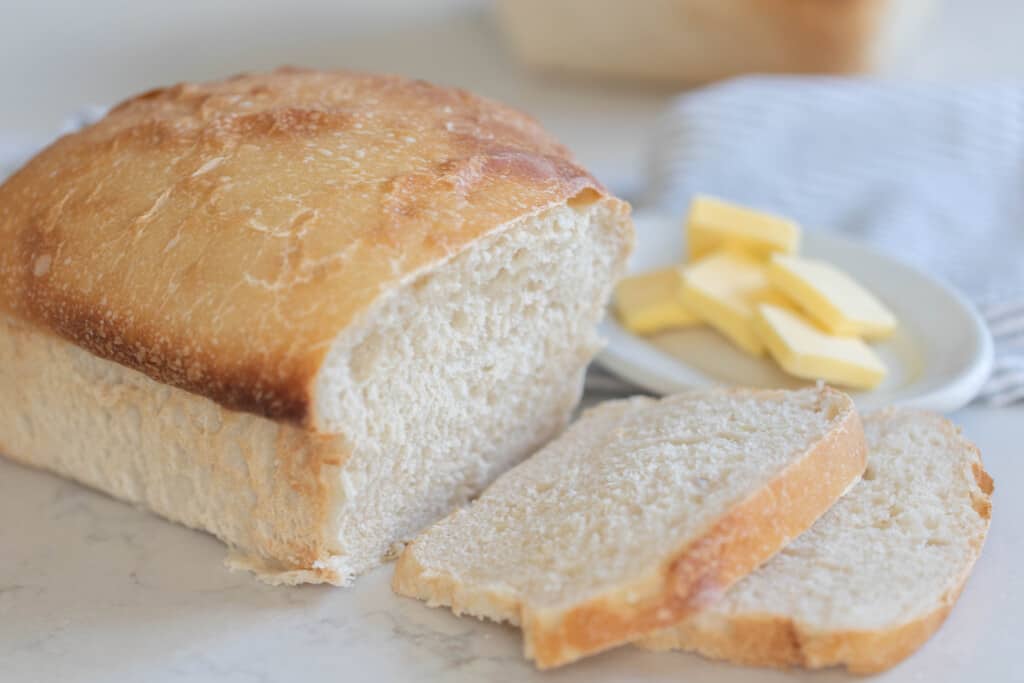
Baker’s Schedule
12:00 PM: Feed sourdough starter.
8 PM: Create dough. Allow to bulk ferment.
8 AM: Divide and shape dough. Allow to rise 2-3 more hours.
10 AM: Preheat the oven and bake.
Find More Sourdough Bread Recipes:
- The Easiest No-Knead Sourdough Discard Bread
- Bread Machine Sourdough Bread Recipe
- Spelt Sourdough Bread
- Sourdough Rye Bread
- Sourdough Pumpkin Bread
If you try this recipe and love it, I would love if you gave it 5 stars! Also, tag me on Instagram @farmhouseonboone.
Sourdough Potato Bread
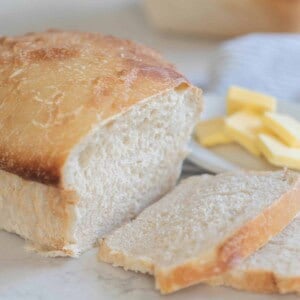
Ingredients
- 1 cup mashed potatoes, can used leftover or make with 1 large russet potato explain in directions how to make mashed potatoes
- 2 cups milk, can also sub potato water (the water the potato boiled in to make this dairy free)
- 2 teaspoons salt
- 1/4 cup sugar
- 4 tablespoons softened butter, plus more for greasing the pans
- 1 cup sourdough starter, active and bubbly
- 5 1/2 cups all-purpose flour
Instructions
- Peel potatoes and add to a pot of water. The water should cover the potatoes over 2 inches.
- Place pan on medium high heat and boil for 15-20 minutes or until fork tender.
- Drain potatoes and mash. Set aside.
- Add all ingredients to a stand mixer with dough hook and knead until smooth and elastic, about 10-15 minutes. Make sure it pulls away from the sides of the bowl, and passes the window pane test.
- Place in a greased bowl with a lid or cover with plastic wrap or beeswax wraps.
- Bulk rise- 8 hours in a warm place. The dough should double.
- Divide the dough into two equal sized dough balls.
- Shape to fit into loaf pans.
- Grease pans well to prevent sticking. Add dough to loaf pans.
- Cover with something airtight and rise again until doubled, about 2-3 hours.
- Preheat oven to 350 degrees.
- Bake for 45 minutes or until the crust is golden.
Notes
- Don’t have a stand mixer? No problem. Mix ingredients in a bowl and let it set for about 15 minutes. Next, start stretch and folds.
- Grab the edge of the dough in the bowl and pull up gently wiggling the dough a bit while stretching it upwards. Push the dough back into the center. Turn the bowl a quarter turn and do this stretch and fold again, repeating 2-3 more times. This is one round of stretch and folds.
- First 3 rounds of stretch and folds – every 15 minutes. Last 3 rounds stretch and folds – every 30 minutes.
Nutrition
Nutrition information is automatically calculated, so should only be used as an approximation.
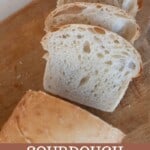
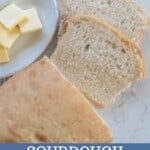





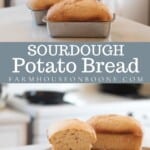

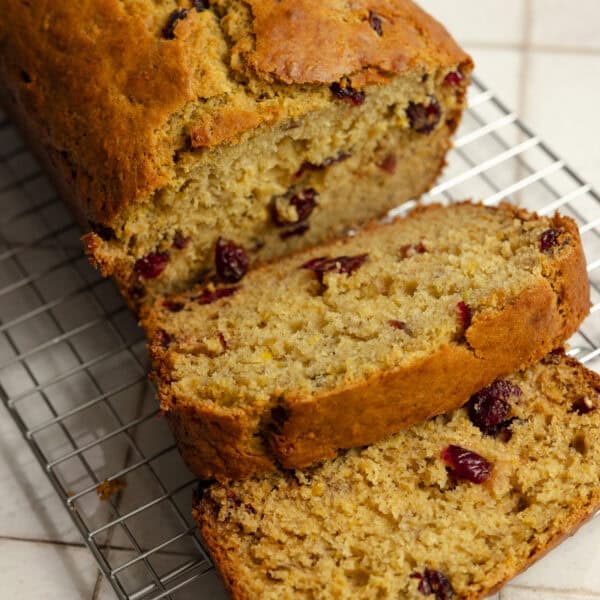

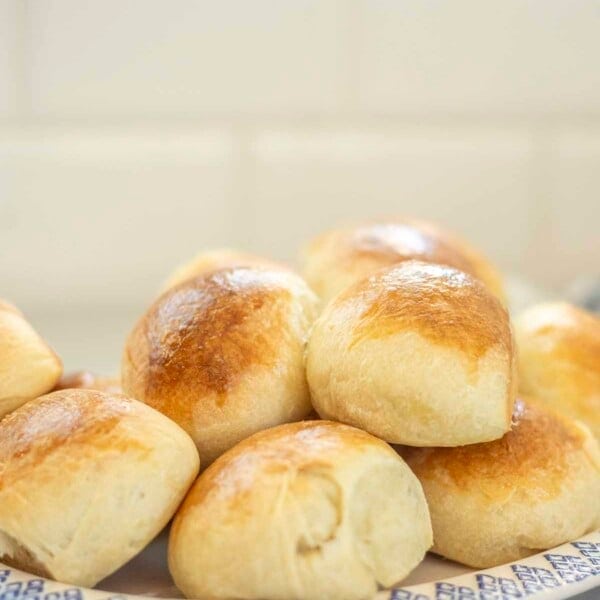






I’ll need to ferment longer than overnight. Do I shape into loaves after overnight and then place in fridge? Do I let it rise first then fridge or put in fridge then let it rise before baking?
I would shape the loaves (after the first bulk fermentation) and then place in the fridge overnight. Bake straight from there.
I mixed last night and baked today. Great flavor. I live a couple hours from the Gulf Coast and I think humidity plus some bad storms rolling through had something to do with this not turning out right. I felt like I was in an episode of I Love Lucy mixing it. But I persevered. It’s not a pretty bread, but that said, will make fabulous toast. It’s all about flavor anyway. Thanks for sharing your recipe and look forward to more.
Thank you for the imagery. Gave me a little a chuckle. Glad it still worked for you and tasted yummy.
Hi!…..Can this be adjusted to use in a breadmaker? Thanks
I’m sure it could be. I’ve never tried it, but I do have this bread machine recipe: https://www.farmhouseonboone.com/bread-machine-sourdough-bread-recipe
Hello Lisa, wondered what kind of milk do you use, whole, 2%, etc? Would Almond milk work? If I use potatoe flakes, would it be best to use milk instead of plain filtered water? Can’t wait to try this! We make your sourdough sandwich bread on a regular basis, definitely a favorite!
I use whole raw milk since we have a dairy cow. But any milk should work. I would make the potato flakes as the package recommends to make mashed potatoes. Hope that helps.
Thank you Thank you Thank you Lisa this could not have come to my mailbox at a more appropriate time. I have tons of mashed potatoes left over from New Year’s dinner. Can’t wait to try this Thank you so much.
What great timing! Enjoy.
I am so excited to try this recipe. I grew up eating potato bread and potato candy. I love all your recipes, so it is a win-win!
Thank you and Happy New Year 🙂
Wonderful! I hope you enjoy it. Happy New Year.
Does this allow enough time for the flour to ferment for people with sensitivity. I can’t remember the rules, 8 hours seems pretty long.
It would depend on the sensitivity. If someone is more sensitive you could do it longer. To avoid overfermentation, I would place it in the fridge after the bulk fermentation.
Hi Lisa! Im a longtime fan who has gone vegan more recently. The past few months ive been veganizing all of my old trusty favorites from your blog and just wanted to say i really appreciated you including the option here!
Glad I could help!
Hi thank you for the recipe. I can’t wait to try it. Can I freeze one of the loaves ?
I always freeze my loaves of sourdough bread. While they are still warm, I wrap each loaf in waxed paper, and place in a freezer bag, getting as much air as possible out. Then pop in the freezer. Allow the frozen bread to thaw several hours before slicing.
Hi Lisa!
Can’t wait to try this out. I’ve always heard to save the potato water and add it to bread recipes because of the moisture content it adds, but not sure I’ve actually ever done it using potatoes. I have seen it, ate it commercially made, never made it myself. I will be using einkorn since white flour (commercial and unbleached) gives me migraines, and I’m learning as I go. I will probably half this recipe and add up to about 3 1/2 cups einkorn just to see how it turns out making it with einkorn before making a double batch of over 6 cups flour. So neat of you to share this with us. I have been learning a lot from you using einkorn and are continuing my experiments with it as well. We absolutely LOVED your einkorn cinnamon rolls for Christmas morning. Tasted like a honey bun cake! Thanks again!
I would love to hear how it turns out with einkorn flour! I’m so glad you enjoyed the cinnamon rolls! That stinks about the migraine, but I’m glad you can still tolerate einkorn. Happy baking.